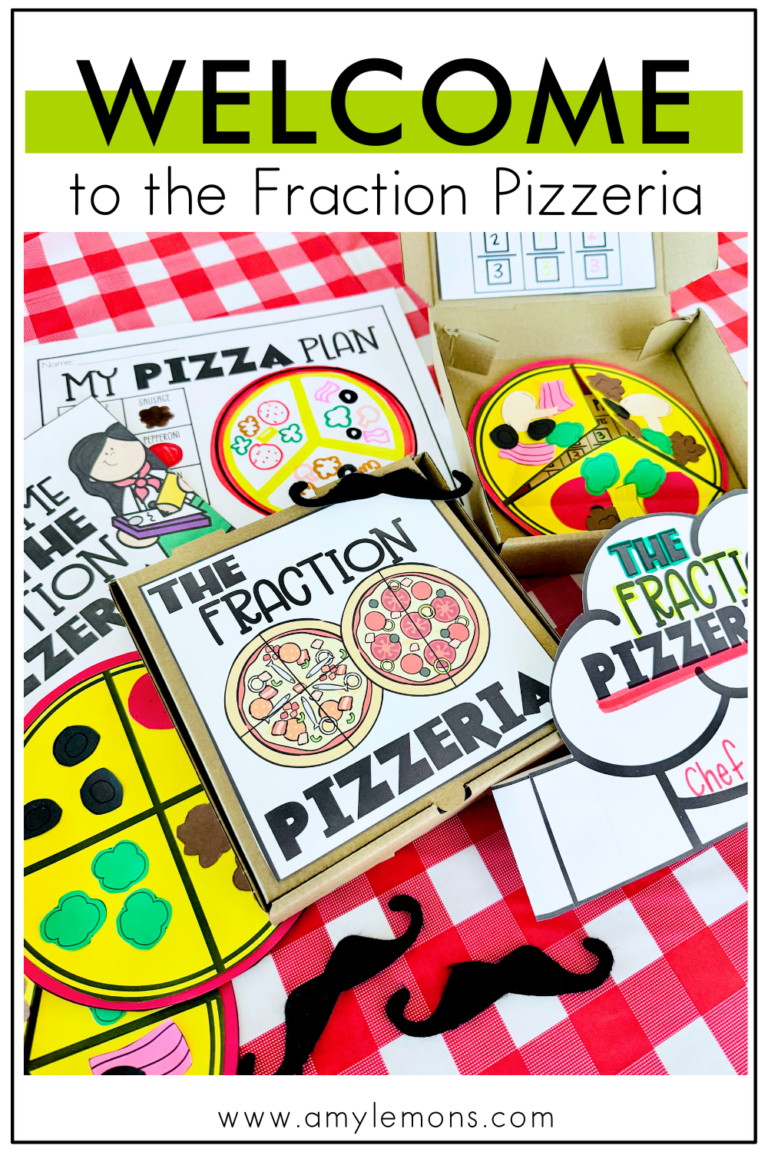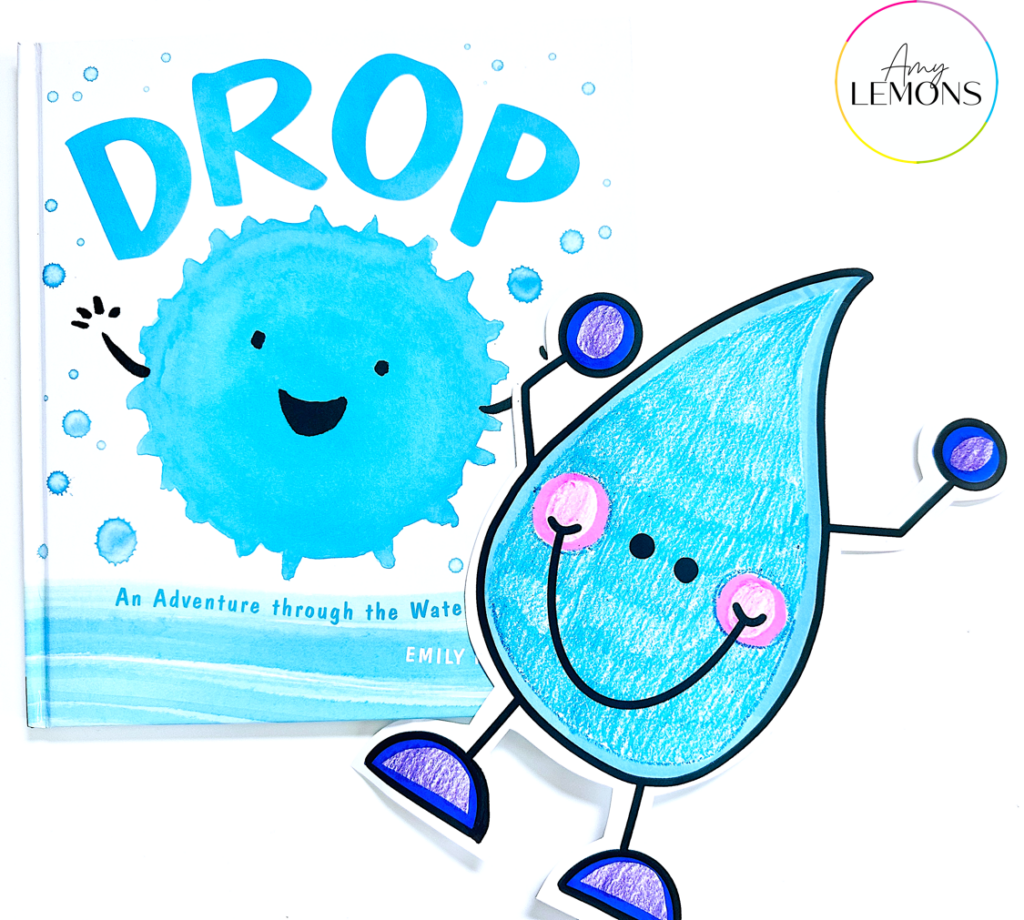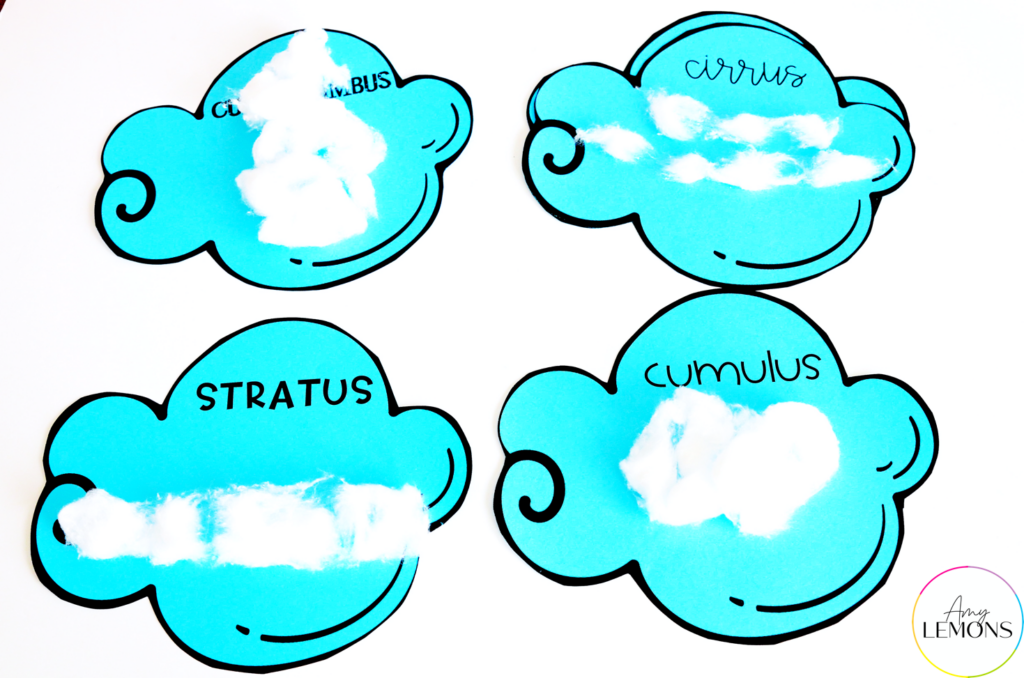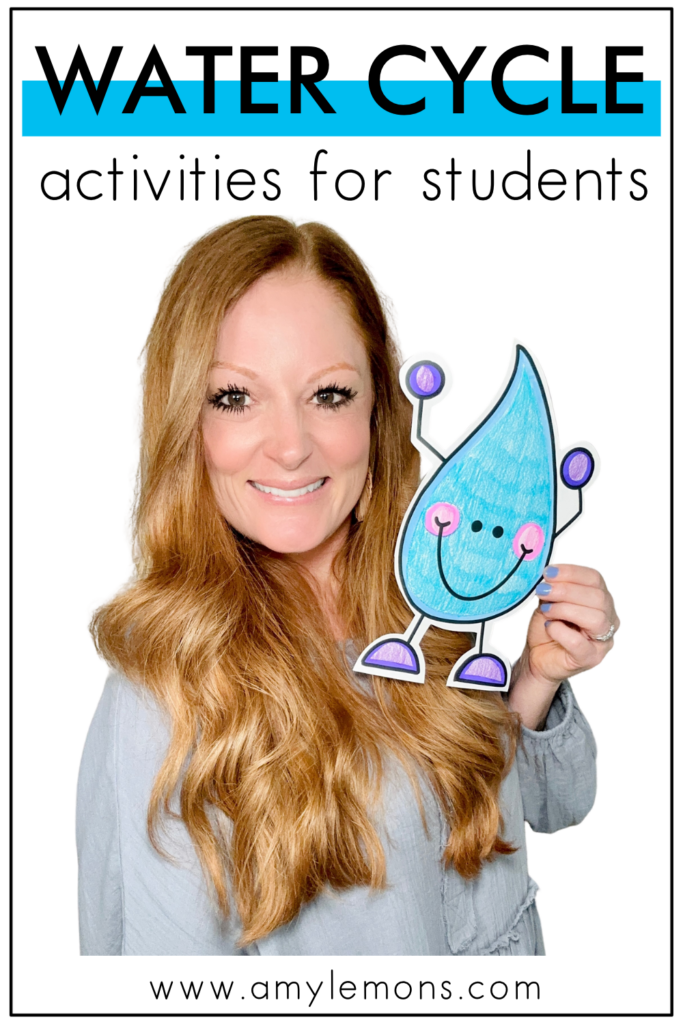
“Teacher, where does rain come from?” said every kid, ever. I mean can you blame them?
Rain seemingly comes out of nowhere. Even when the sun is shining bright you may find yourself caught in a sudden downpour. But that’s what makes teaching about the water cycle so special. And it is honestly, one of my favorite subjects to create interactive water cycle activities for.
So, I’ll be sharing a few different ways you can teach about the water cycle steps and get students actively engaged in the process with a water cycle chant/song, directed drawing, and hands-on activities.
Plus, I have a water cycle picture book recommendation that I think you will love. It is just perfect for portraying the water cycle in a kid-friendly way.
The water cycle is defined as the continuous movement of water within the Earth and atmosphere. But that definition, while slightly condensed, just isn’t going to cut it for elementary students!
They need it broken down into terms they can understand with visuals, including visual words and images. There are two ways I like to introduce the water cycle to students – a chant and a good picture book!

I love chants! They are such an easy way to portray a concept to students and have it stick around way past the lesson. Here’s a water cycle chant I’ve used with my students that never fails.
Watch this video to catch the rhythm.
{Affiliate links have been used below but I only share books I’ve actually read and enjoy!}

Recently, I was introduced to the book Drop. Drop is an adventurous and humorous story of the water cycle and all of its processes told in a way kids will just love! Drop tells us all about her adventures as a water drop who has flowed through a thing or two.
I like to use picture books to share information about a particular subject and drive classroom discussion about our learning objective. After our reading time, I like to practice, model, and review with hands-on activities!
{Looking for the drawing you see above? I’m sharing all about it below with a FREEBIE template and video you can use!}
Once the students have a good grasp of the function of water cycles, it’s time to immerse them in the process.
Personally, I am all for getting artsy with this side of teaching. The water cycle is a visual process. So when teaching about the water cycle, you can have students create pieces that visually represent what they’ve learned.
Here are two ideas we include in our End of the Year Activities unit that help students with understanding our clouds’ important role in the water cycle.

After introducing the four types of clouds, it is the perfect time to get students outside to explore them in real life!
To make this a more engaging exercise, have students create a cloud viewer first. The cloud viewer includes four strips of paper printed with each cloud type’s name and image.
Students glue the strips together in a square pattern creating a border for their peephole to view the clouds, as you can see in the image above.
They can use their cloud viewer to explore and observe the clouds outside. They can use the images along the border to determine which type of cloud they see through the viewer.
If you have the time, you could make this a multi-day process to watch as the clouds change!
Either way, this is such an easy way to apply what students are learning to their everyday lives. Which in turn, makes it that much easier for them to retain the information.

After students get a good glimpse at the clouds outside, it’s time to return to the classroom and create their own!
You can use cloud-shaped printables, like the blue clouds pictured above, as the base for the clouds. On top, students can use blue cotton candy or cotton balls to make models of the four cloud types.
This is an exciting way for students to showcase what they’ve learned without relying on worksheets.
Including cloud observations and modeling in your water cycle activities helps students understand the steps in a way they can easily see, and it helps answer that aforementioned question about rain!
Looking for additional stem activities? Check out our End of the Year STEAM unit on TPT.

Remember that book, Drop, I mentioned above? Well, this directed drawing is the perfect accompanying activity! And even if you don’t get a chance to read the story, this water drop drawing works great as a follow-up to your lesson on the water cycle.
For this hands-on activity, students will draw a raindrop and then write about what they’ve learned about the water cycle.
Here’s a directed drawing video you can share with the class as they follow along with me showing them step-by-step how to draw their drops!
And you can grab the directed drawing templates as a FREEBIE below! Just let me know where to send it.
If you’re interested in additional Spring inspired activities or books, I have a Spring activities post with a few ideas!


Hey, y’all! My name is Amy Lemons and I am passionate about providing students with both engaging and effective standards-based Math and ELA lessons.

Sample a day of Rooted in Reading with these lesson plans and activities for Reading Comprehension, Vocabulary, and Grammar!